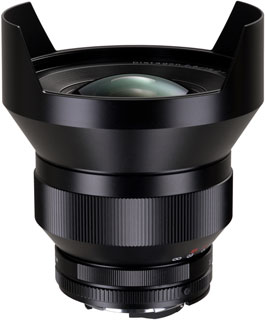
$220 SAVE $130 = 37.0% Western Digital 16.0TB Western Digital Ultrastar DC HC550 3.5-in… in Storage: Hard Drives
|

|

|

|

|

|
Zeiss 15/2.8 Distagon Q&A — Design Goals
Related: distortion, filters, optics, wide angle, Zeiss, Zeiss 15mm f/2.8 Distagon, Zeiss Distagon, Zeiss DSLR Lenses, Zeiss Lenses
This is one of several pages resulting from the March 13, 2012 discussion with Staff Scientist Dr. Hubert Nasse. See the original list of questions.
These pages are a summary of the discussion based on notes taken, and as reviewed by Dr. Nasse. Bracketed comments [ ] are editorial in nature.
Design goals were very demanding—
- Superior sharpness to existing 15mm lenses, including Nikon and Canon offerings. Contrast over most of the imaging area ranges from exceptional to very high even wide open, with a reduction only at the far edges and corners.
- Smaller and lighter than zooms in its range (e.g., Nikon 14-24). Although the built-in lens shade is large, the lens is only modestly heavier than the 21/2.8 Distagon (740g vs 661g with caps, Nikon versions).
- Significant close focus capability resulting in 1:9 magnification.
- Little or no focus shift (non-zero but negligible). This is very much a concern with high resolution digital. [See my case study of 14-24/2.8G focus shift in Making Sharp Images, the 14-24 focus shift is a serious technical challenge especially for the Nikon D800].
- Standard filter threads, primarily intended for lens protection (since digital photography usually does not require filtration). Support for filters resulted in a lens face significantly larger than the front element in order to cope with off-axis rays when using filters.
- Avoidance of a bulbous front end which is subject to damage, and would have precluded filters. The front element is relatively well protected, since it is recessed significantly deeper than the lens shade. This is helpful in rainy conditions also. [diglloyd: as I found when shooting for several hours of rain!]
- Digital sensor friendly with a very low ray angle of 11° (full frame), which is superior to the ZEISS 100/2 at 13.6°, or the 19° of the 18/3.5 Distagon.
- Minimal “breathing”. It is normal to have low breathing for wide angle lenses. The 15/2.8 varies from 15.4mm at infinity to 15.1mm at 1:9— very little change over the extreme range of focus.
- Low distortion and particularly to avoid wave-type distortion. The 15/2.8 Distagon succeeds here with only 2% barrel distortion— minimal, and straightforward to correct in post processing for demanding applications.
- Very low flare characteristics. Several design iterations improved the performance here prior to production. With the sun just inside or outside the frame, the level of veiling and ghosting flare remains at very low levels in spite of its 15-element design.
The 15/2.8 Distagon has one area in which it is less strong (field testing might determine others):
- Corner brightness is relatively dark at f/2.8 as compared with other designs like the Nikon 14-24mm f/2.8G.
Other context and perspective
The 1970's saw a ZEISS 3.5/15mm non-aspherical design which was licensed to Pentax. Today with aspherical lenses and more special glass types, achieving f/2.8 with much superior quality was possible.
Designing for f/2.8 was not really an issue, because the availability of aspheric lenses and a wide selection of glasses with anomalous partial dispersion made it possible to solve the design challenges. The sophisticated design involves a complex interaction of lens elements with differing refraction characteristics, but modern glass types made the design possible.
Improving further upon the design is possible, but perhaps not so practical. At significant additional expense, a design with an aspherical front element would improve performance in certain ways. But other improvements would require a more complex and larger lens. For example, the ZEISS Master Prime 14/T1.3 (covering a smaller Cine size sensor) has 17 elements and is 3X heavier than 2.8/15.
Seagate 22TB IronWolf Pro 7200 rpm SATA III 3.5" Internal NAS HDD (CMR)
SAVE $100

















